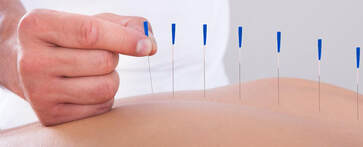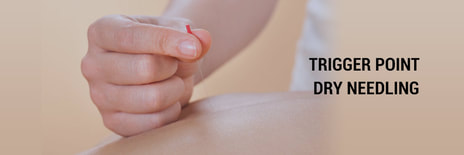Dry Needling
Our treatment philosophy
Our practitioners are qualified and trained for many years to be able to use and apply several needles to the areas of pain and discomfort. They will assess and recommend where they believe that applying needling will help the most to instantly relieve your pain. Appointments will usually be long enough to treat more than one area of the body if required.
We believe in individual patient management, and do not have set treatment plans in place. It is always best to you ask your practitioner what they recommend for you specifically, especially after your first treatment visit, in regards to suggested length of appointments required for your condition and body.

What is Dry Needling?
Dry Needling can be used for a variety of musculoskeletal problems, neuromuscular dysfunction, muscle imbalances and pain syndromes. Therapy is specifically aimed to help with muscular pain, myofascial pain syndrome, hypertonic and tender muscles, overuse injury, painful tendons, tender ligaments and more.
Many muscular related conditions are thought to be a primary contributing factor to pain and other related symptoms. These conditions include, but are not limited to neck pain, back pain, shoulder pain, arm pain, tennis elbow, carpal tunnel, golfer's elbow, headaches, migraines and tension-type headaches, jaw pain, buttock pain, pelvic pain, leg pain, sciatica, hamstrings strains, calf tightness/spasms.
We can treat:
- TMJ & Jaw pain
- Shoulder pain
- Sciatica
- Joint inflammation
- Back pain
- Sore or stiff neck
- Low back pain
- Sinus symptoms
- Frozen shoulder
- Tennis elbow
- Joint pain
- Tissue swelling
- Muscle tension anywhere in the body
Benefits of Dry Needling
- Pain relief
- Increased circulation of blood
- Promotion of healing
- Increased range of motion
- Increased strength and functionality of muscle tissues
- Return of correct biomechanics
- Provide instant muscle release
- Can be used on hard to release muscle areas and groups

Appointments & Scheduling
Patients will often ask 'once i am are feeling better, how often do i need to have dry needling?... and the answer to this question is completely different for every patient, as area of treatment, pain levels, conditions, lifestyle factors and how what the whole body is doing.
Lifestyle factors can affect how well you respond to the treatment and how many sessions you need to keep the body feeling good, as well as how our practitioners will recommend that you frequent the clinic for an appointment. We can offer you advice on when is the best time for you to come back for another session to keep the body and muscles feeling good.
If your pain or symptoms comes back, additional sessions may be recommended to adequately and prevent serious injuries, or our practitioners may suggest you investigate further with collaboration from one of our qualified Chiropractors or Osteopath on our team. They will be able to offer a diagnosis and referral for imaging such as X-rays or ultrasounds.
Frequently Asked Questions
How does the process work?
Dry needling of a trigger point will elicit an involuntary reflex in the muscle fibres which forces blood, oxygen and inflammation into the muscle. In turn, the nerve endings in the muscle will be stimulated, resulting in a reduction in pain and release of tension in the muscle.
It elicits the same response as with non-invasive trigger point therapy and deep tissue massage. Please ask one of our friendly staff for more information and online booking options.
What is Trigger Point Dry Needling?
Dry Needling is the use of either solid filiform needles or hollow-core hypodermic needles, to be inserted directly into the trigger points and muscle bundles to act as a stimulant from underneath the skin.
The process of dry needling, either with or without Myotherapy Massage will help to increase circulation and blood flow, thus speeding up repair of the area and its surrounding tissues.
Does Dry Needling hurt?
No, usually our practitioners will endeavour to make the process as painless as possible. At times, the patient may feel a mild twitch or tenderness when the needles are inserted into the skin, and for a few hours afterwards, however the process is considered less painful than remedial massage therapy when applied to extremely tender areas or when a patient is sensitive to touch.
Are needles sterile?
Yes, we only use sterile disposable needles during our treatments. We also apply alcohol swipes clean the area prior to and after the treatment has taken place.
